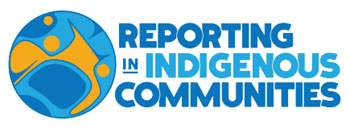25 Nov What’s with @riicnews & RIIC News on Facebook?
If you really got to the truth of it – yes, RIIC just wants more Friends and Followers than Justin Bieber.
But RIIC had more noble goals when we set up a Facebook page – RIIC News – and a Twitter account – @riicnews.
RIIC really hopes the Facebook and Twitter sites will become a crowd-sourced “best practices” guide for journalists on reporting in Indigenous communities.
RIIC really hopes the Facebook and Twitter sites will become a crowd-sourced “best practices” guide for journalists on reporting in Indigenous communities.
Here’s the backstory. When the Guide was being developed, RIIC had planned to include several “best practices” case studies. The kind you often see in journalism textbooks, where the author critiques a handful of news articles, pointing out the flaws and suggesting what the reporter could have done better.
The problem is you need to keep updating the case studies. Reading old news can be painful.
Then, one morning, RIIC woke up in the Silicon Valley and discovered the term “crowd-sourcing.” RIIC figures crowd-sourcing is a combination of two concepts Indigenous folks are familiar with – the moccasin telegraph, where everybody in a tight-knit community spreads news by word of mouth, and a good ol’ fashioned NDN feast, where everyone pitches in to help.
Fact is, folks around the globe are going mad sharing Indigenous news on Twitter and Facebook. We’re posting articles we think our followers and friends care about. Sometimes, we gripe about how the reporter wrote the article – or applaud what a great job the reporter did.
Take those Indigenous news articles you feel strongly about and post the link on our Facebook wall, or Tweet the link and mention @riicnews, AND write a short explanation of what you think the reporter did or didn’t do well.
Now, RIIC wants you to take one extra step. Take those Indigenous news articles you feel strongly about and post the link on our Facebook wall, or Tweet the link and mention @riicnews, AND write a short explanation of what you think the reporter did or didn’t do well.
RIIC hopes we can gather those kudos and kvetches in one place, so that journalists can examine multiple articles from multiple sources over a body of time and read critiques from our audience to understand how they react to Indigenous news.
Of course, you can use the Facebook or Twitter pages in other ways too. If you see a website you think would be helpful to journalists who cover Indigenous news, post it or Tweet it to us. We’ll make sure other journalists find it. If you want to contribute photos to RIIC – of journalists in the field covering Indigenous news – then share them on Facebook or Twitter. RIIC promises to give you credit.
Or, if you’re just dying to share a YouTube video of silly tricks by a rez dog, go for it. RIIC News on FB and @riiccnews – where rez dogs make front-page news.





